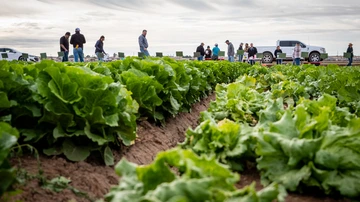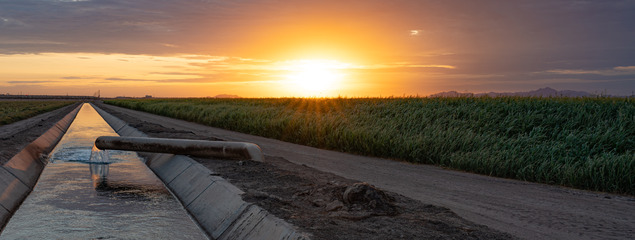
Increasing Irrigation Efficiency
Water Use and Management Research
Updated Crop Evapotranspiration (ET) & Salinity Management
Iceberg and Romaine Lettuce
Table 1. Lettuce heat units, NDVI, and Kc values classified by FAO-56 growth stages.
| Stage | GDD (Co) | GDD (F) | NDVI | Kc |
|---|---|---|---|---|
| INI | 0.124 | 0.9 | ||
| INI/DEV | 399 | 750 | 0.157 | |
| DEV/MID | 783 | 1441 | 0.755 | 1.19 |
| MID/END | 1133 | 2071 | 0.755 | |
| END | 0.456 |
GDD is based on minimum and maximum thresholds of 4.5 C (40.1 F) and 28.0 C (82.4 F), respectively.
Salinity management for lettuce is controlled by the need to maintain low salt concentrations at shallow soil depths. Lettuce is the most salt sensitive crop produced in the lower Colorado River region. Because seasonal irrigation application efficiencies at Yuma exceed 80%, the 20% required leaching fraction for salinity management is often not achieved during the growing period of lettuce or the growing period of the rotational crop (Figures 2, 3, and 4). Thus, a summer pre-irrigation is typically required to restore salt balance.
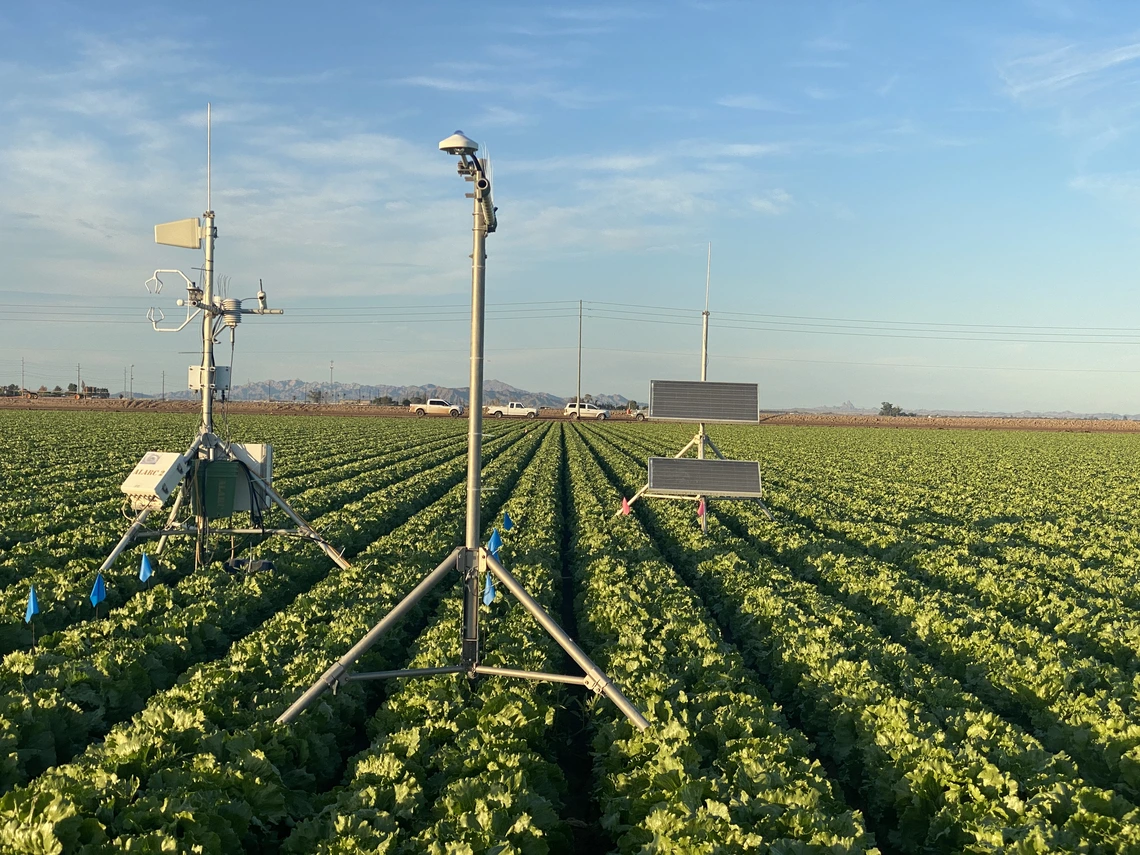
Figure 1
Eddy Covariance System in an iceberg lettuce field near Yuma, Arizona.
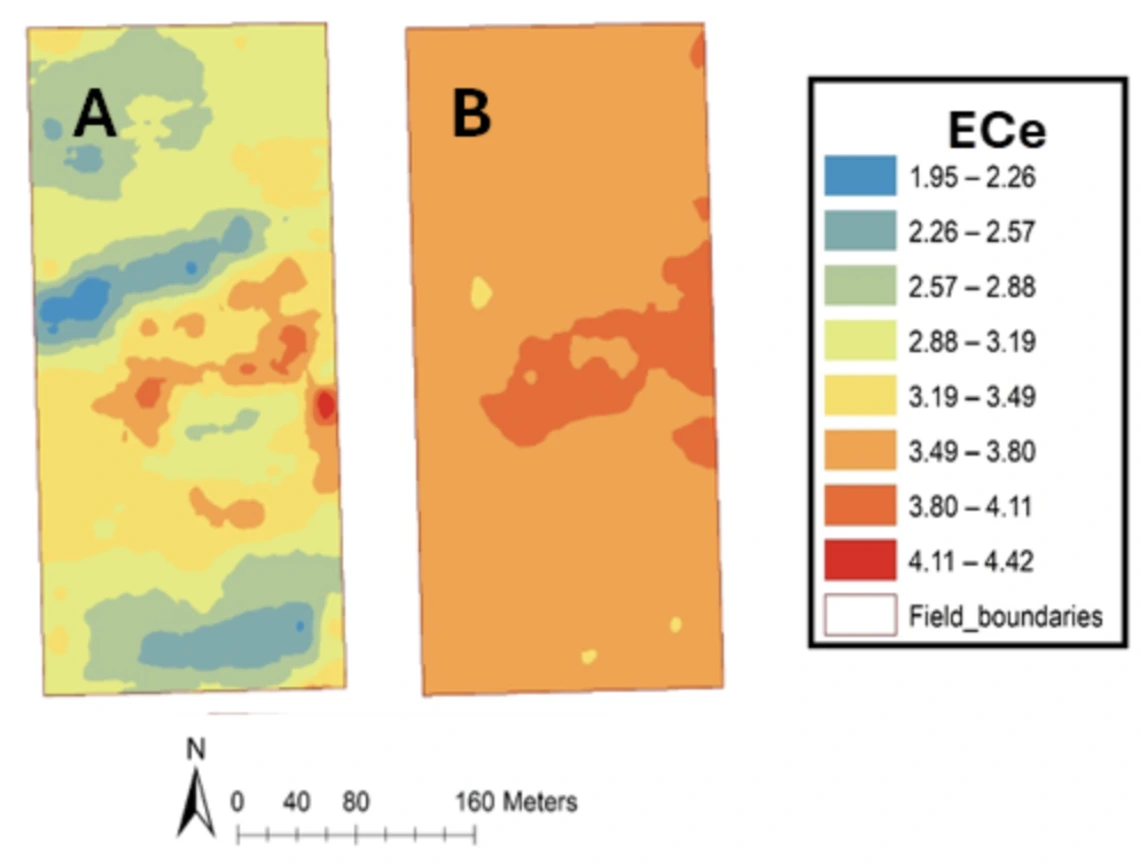
Figure 2
Field-wide salinity (dS/m) to 30 cm depth before and after iceberg lettuce for iceberg lettuce produced in the Yuma Irrigation district in 2018.

Figure 3
Salinity changes as measured by ECe in Yuma Irrigation District for a lettuce/wheat cropping rotation in 2016-2017.
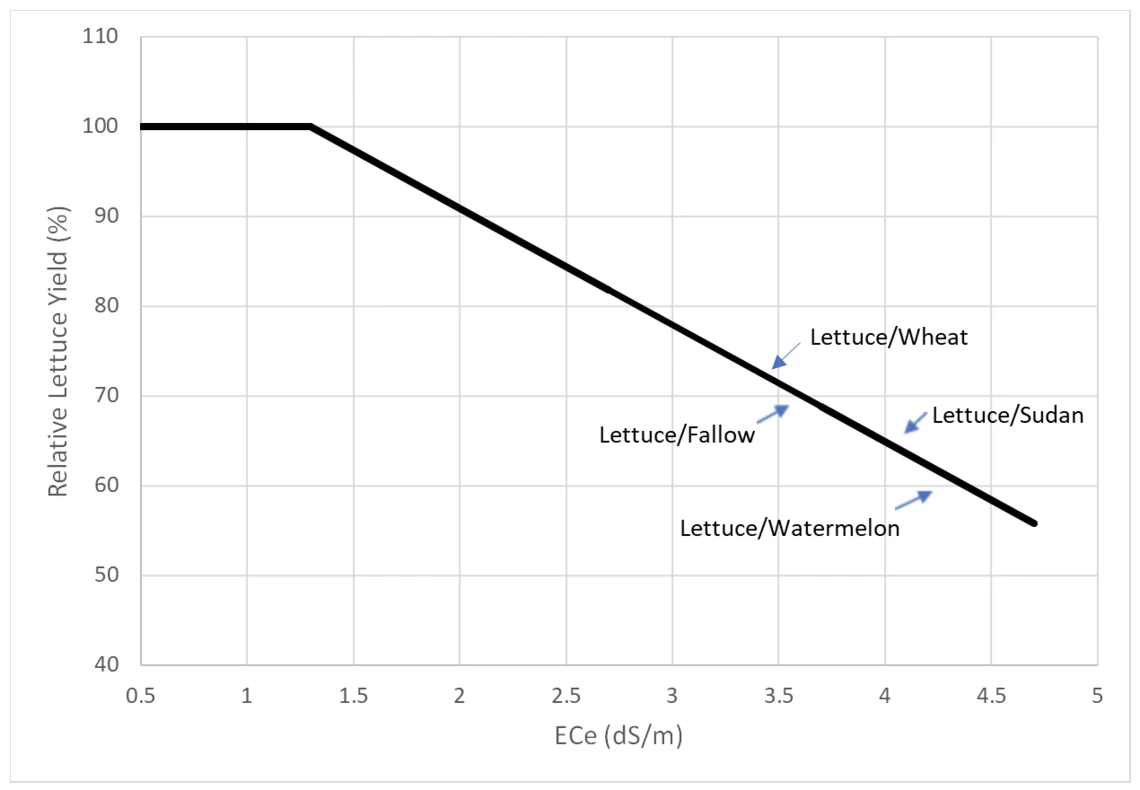
Figure 4
Projected lettuce yields following several lettuce rotations based on measured average ECe across sites after rotations. We project significant production losses without summer leaching.


